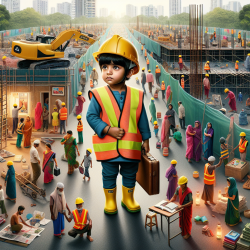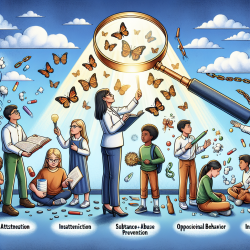The construction industry in India is a significant contributor to the country's rapid economic growth. However, it also presents a unique set of challenges, particularly for the estimated 40 million migrant workers and their families. A recent study titled "A qualitative case study of child protection issues in the Indian construction industry: investigating the security, health, and interrelated rights of migrant families" sheds light on the complex dynamics affecting these families. This blog post explores how practitioners can use these insights to improve child protection efforts.
The SAFE Model: A Framework for Understanding
The research utilizes the SAFE model, a rights-based framework that examines four core domains essential for children's well-being: Safety/freedom from harm, Access to basic physiological needs and healthcare, Family and connection to others, and Education and economic security. These domains are interrelated, meaning insecurity in one area can affect others.
Key Findings from the Study
- Safety Concerns: The study highlights unsafe living and working conditions at construction sites. Children are often exposed to hazardous environments due to inadequate supervision and lack of safe play areas.
- Health Challenges: Limited access to healthcare services is a significant issue. Families face high medical costs and often rely on informal healthcare providers.
- Educational Barriers: Frequent mobility disrupts children's education. Many children lack access to schools due to distance, lack of documentation, or financial constraints.
- Family Dynamics: The absence of extended family support and long working hours for parents limit effective child monitoring.
Practical Steps for Practitioners
The findings call for enhanced systems of corporate and government accountability and the implementation of holistic child-focused policies. Here are some practical steps practitioners can take:
- Advocate for Policy Changes: Work with local governments and organizations to ensure enforcement of existing laws that protect migrant workers' rights.
- Create Safe Spaces: Develop child-friendly areas at construction sites where children can play safely under supervision.
- Improve Healthcare Access: Collaborate with healthcare providers to offer affordable medical services on or near construction sites.
- Support Educational Initiatives: Facilitate access to education by partnering with local schools and NGOs to provide transportation or mobile classrooms.
The Importance of Further Research
The study underscores the need for ongoing research into the conditions faced by migrant families. Practitioners are encouraged to conduct further investigations into effective strategies that can be implemented at various levels—from grassroots initiatives to policy advocacy.
This research provides a comprehensive understanding of the challenges faced by migrant families in India's construction industry. By applying these insights, practitioners can significantly improve child protection efforts. To read the original research paper, please follow this link: A qualitative case study of child protection issues in the Indian construction industry: investigating the security, health, and interrelated rights of migrant families.










